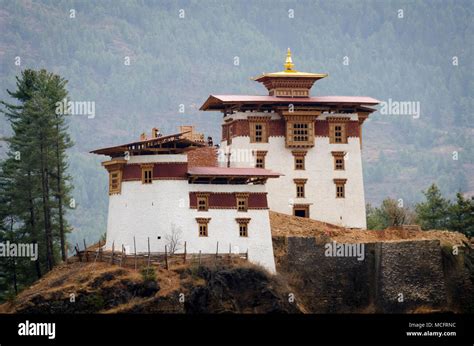
Drukgel Dzong
Drukgyel Dzong, also known as Drukgyal Dzong, is a historic fortress and Buddhist monastery located in the upper Paro District of Bhutan. It was built in 1649 by Tenzin Drukdra at the command of Zhabdrung Ngawang Namgyal to commemorate Bhutan's victory over an invasion from Tibet. The name Drukgyel Dzong translates to "Fortress of the Victorious Drukpas". Drukgyel Dzong is deeply tied to Bhutan’s history, particularly its defensive victories and cultural milestones. Here are some key historical events linked to the fortress: Victory over Tibetan Invasion (1649): The dzong was built to commemorate Bhutan’s triumph over an invading Tibetan-Mongolian army, solidifying Bhutan’s sovereignty. Fire Destruction (1951): A devastating fire nearly destroyed the dzong, leaving it in ruins. Despite this, the site remained an important symbol of Bhutanese resilience. Restoration Announcement (2016): To mark the birth of Bhutan’s Crown Prince, the government announced plans to restore Drukgyel Dzong to its former glory. UNESCO Tentative Listing: The dzong is recognized as an important cultural heritage site and is on Bhutan’s tentative list for UNESCO World Heritage status. Even in ruins, Drukgyel Dzong continues to be a powerful emblem of Bhutan’s history
Drukgyel Dzong follows the traditional Bhutanese dzong architecture, which is characterized by its fortified design, high inward-sloping walls, and minimal windows in the lower sections. Here are some key architectural features: Defensive Structure: Built as a military fortress, the dzong was strategically positioned to guard against invasions from Tibet. Thick Stone Walls: The walls are massive and inward-sloping, designed to withstand attacks and harsh weather conditions. Minimal Windows: The lower sections of the dzong have few or no windows, reinforcing its defensive capabilities. Flared Roofs: The temples within the dzong feature traditional Bhutanese flared roofs, adding to its aesthetic appeal. Courtyards and Temples: Like other dzongs, Drukgyel Dzong includes courtyards and religious structures adorned with Buddhist motifs. Even in its ruined state, Drukgyel Dzong remains a remarkable example of Bhutane